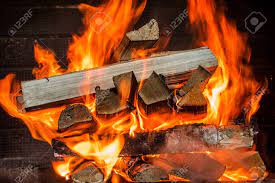The Ultimate Guide to Choosing the Best Firewood for Your Home
Choosing the right firewood is essential for effective and enjoyable wood burning. With various wood types, drying processes, and storage techniques, finding the best option can be challenging. This ultimate guide covers everything you need to know about selecting the best firewood for your home.buy klin dry firewood
Table of Contents
- Why Choosing the Right Firewood Matters
- Understanding Firewood Types: Hardwoods vs. Softwoods
- Top Hardwoods for Home Heating
- Best Softwoods for Starting Fires
- Seasoning Your Firewood: Why and How to Do It
- Tips for Storing Firewood
- Avoid These Firewood Mistakes
- FAQs About Choosing Firewood
- Final Thoughts
Why Choosing the Right Firewood Matters
The type of wood you use can affect everything from how hot your fire burns to how long it lasts. Good firewood:
- Increases Heat Output: Hardwoods burn hotter and longer, making them ideal for heating your home.
- Burns Cleaner: Properly seasoned wood produces less smoke and creosote buildup.
- Reduces Maintenance: Using the right wood minimizes chimney buildup and the need for frequent cleanings.
Understanding Firewood Types: Hardwoods vs. Softwoods
Choosing the right firewood starts with understanding the difference between hardwoods and softwoods.
- Hardwoods: Dense woods like oak, hickory, and maple. They burn longer and produce more heat, making them ideal for home heating.
- Softwoods: Lighter woods such as pine and fir. These ignite quickly and are perfect for starting fires but burn out faster than hardwoods.
When to Use Hardwoods vs. Softwoods
Use softwoods to start your fire, then add hardwoods to maintain it for a longer, steady burn.
Top Hardwoods for Home Heating
Hardwoods are your best option for long-lasting, efficient heat. Here are some of the top choices:
- Oak
- Pros: Burns long and hot, readily available.buy klin dry firewood
- Cons: Takes longer to season due to density.
- Hickory
- Pros: One of the hottest burning woods, perfect for sustained heat.
- Cons: Can be challenging to split and is pricier.
- Maple
- Pros: Burns cleanly with minimal smoke.
- Cons: Not as long-lasting as oak or hickory.
- Cherry
- Pros: Burns hot with a pleasant aroma, great for indoor fires.
- Cons: Slower to season and can be more expensive.
- Birch
- Pros: Catches fire quickly, providing immediate warmth.
- Cons: Burns faster, so it may need to be paired with other hardwoods.
Best Softwoods for Starting Fires
Softwoods are ideal for kindling and starting fires quickly. Here’s a look at the top options:
- Pine
- Pros: Easy to ignite, makes excellent kindling.
- Cons: Produces more creosote, so it’s best for short-term burning.
- Fir
- Pros: Burns clean and bright, commonly available.
- Cons: Short burn duration, requiring frequent restocking.
- Cedar
- Pros: Quick to ignite with a pleasant aroma.
- Cons: Burns fast and can produce sparks, so use cautiously indoors.
 Seasoning Your Firewood: Why and How to Do It
Seasoning Your Firewood: Why and How to Do It
Seasoning is the process of drying firewood to reduce its moisture content, which is essential for clean and efficient burning.
Why Seasoned Wood is Better
- Burns Hotter and Cleaner: Lower moisture means more energy is available to produce heat.
- Reduces Creosote Buildup: Wet wood produces more smoke, leading to increased creosote in the chimney.
How to Season Firewood
- Split the Wood: Split logs into smaller pieces to help them dry faster.
- Stack Properly: Stack wood off the ground in a well-ventilated area.
- Cover the Top Only: Leave the sides exposed to encourage airflow.
- Wait: Hardwood generally requires 12-24 months of seasoning, while softwood needs 6-12 months.
Tips for Storing Firewood
Proper storage helps keep your firewood dry and ready for use.
- Elevate the Stack: Stack firewood on pallets or firewood racks to avoid ground moisture.
- Choose a Sunny Spot: Store firewood in an area that gets plenty of sunlight to help it dry.
- Cover Only the Top: Protect the stack from rain and snow but keep the sides open for airflow.buy klin dry firewood
Avoid These Firewood Mistakes
Avoiding common mistakes can enhance your wood-burning experience and prolong the life of your firewood.
- Burning Green Wood: It’s tempting to burn freshly cut wood, but it creates more smoke and less heat.
- Using Treated Wood: Treated or painted wood releases harmful chemicals when burned.
- Stacking Against the House: Keeping wood against your home can attract pests. Maintain at least a few feet of space.
- Not Cleaning the Chimney Regularly: Even if you use well-seasoned wood, regular chimney maintenance is necessary to prevent creosote buildup.
FAQs About Choosing Firewood
1. What’s the best firewood for long-lasting heat?
Hardwoods like oak, hickory, and maple are ideal for long-lasting, high-heat burns.
2. How can I tell if my firewood is seasoned?
Seasoned wood is often gray and cracked, lighter in weight, and produces a hollow sound when hit together.
3. Can I burn softwoods indoors?
Yes, softwoods are good for starting fires, but they burn quickly and create more creosote. Pair them with hardwoods for the best results.
Final Thoughts
Choosing the right firewood is essential for efficient, clean, and safe burning. By understanding the differences between hardwoods and softwoods, properly seasoning and storing your wood, and avoiding common mistakes, you can make the most of your firewood and enjoy a warm, cozy home throughout the season.
